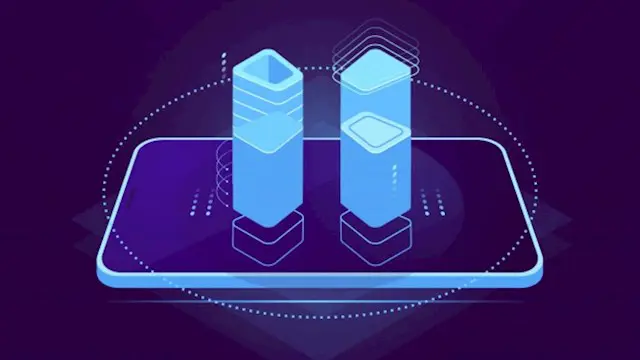
API Design & Development
Self-paced videos, Lifetime access, Study material, Certification prep, Technical support, Course Completion Certificate
Uplatz
Summary
- Reed courses certificate of completion - Free
- Uplatz Certificate of Completion - Free
Add to basket or enquire
Overview
Uplatz provides this comprehensive course on API (Application Programming Interface) Design & Development with RAML. It is a self-paced video course. You will be awarded Course Completion Certificate at the end of the course.
The creation of a robust core architecture results in a long-lasting API. A developer must employ best practices and the appropriate tools to attain this aim. This course will teach you how to develop reusable API web services as well as how to determine the maturity level of an API. Following that, you'll look at the Swagger tools, which include the API editor, API code and client generation, REST API documentation tool, and REST API testing tool. Finally, you'll learn about REST API design approaches and tools like Swagger, OpenAPI, and YAML.
Too many APIs are created on a case-by-case basis. Designing RESTful Web APIs using RAML is a course that will help you design your API to match your requirements before you start implementing it. To begin, you'll look at the design philosophy for building an API on top of REST that isn't dogmatic. Following that, you'll learn how to develop APIs that take into consideration URIs, verbs, message contents, versioning, and security. Finally, instead of expanding your proof of concept into a supported API that you can't get rid of, you'll look at how establishing an API can survive the test of time. You will have a thorough grasp and knowledge of how to create usable APIs for your project at the conclusion of this course.
This API course will teach you how to develop APIs in preparation for your next API-related project. Following a step-by-step method will ensure that you can employ the design principles with ease. In this API course, you'll be able to utilize the design concepts discussed in the course right away. Designing and creating APIs will be second nature to you. You're searching for in-depth knowledge of RESTful API design concepts and how to apply them. You actually want to know if you should build APIs rather than implement them directly. This hands-on course will assist you in addressing all of these questions and gaining skill in any programming language utilizing API design principles and techniques.
Certificates
Reed courses certificate of completion
Digital certificate - Included
Will be downloadable when all lectures have been completed
Uplatz Certificate of Completion
Digital certificate - Included
Course Completion Certificate by Uplatz
Curriculum
Course media
Description
Course Objectives
- Learn about the important principles covered in this course.
- Elucidate design techniques for API web services
- Explain how to utilize the Richardson Maturity Model to determine REST API design maturity.
- Discuss how to make reusability a priority when designing APIs
- Learn RAML (RESTful API Modeling Language) to make it easy to manage the API lifecycle from design to deployment to sharing.
- Explain how to name and version API URIs in the best possible way
- Discuss the API editor, API code and client generation, REST API documentation tool, and REST API testing tool that are accessible with Swagger.
API Design & Development with RAML - Course Curriculum
- Introduction to API
- Data Formats and Authentication
- Designing API
- API Design Center
- Features of API
- API Best Practices
- API Security Schemes
- API Design Principles
- Introduction to RAML (RESTful API Modeling Language)
- Importance of RAML in Design
- RAML API Practical Example
- RAML 100 Complete API Design
- RAML 200 Complete API Design
- RAML API Design Examples
- Build an API for Banking Application
- Build an API for Music Application
- Build an API for Mobile Orders Application
Restful API or Representational State Transfer is an architectural style programming that believes in rendering HTML as it was initially intended. Developers can perform HTTP requests and receive responses using GET requests and POST requests and can be used by just about every programming language. Requests made to a site's URI comes back in HTML, JSON, or some other data format. They're simple to test because the client and server are independent of each other. The architecture provides a variety of web services by increasing interoperability between programs. Using stateless protocols, you can achieve faster performance with fewer obstacles than other web services with arbitrary protocols. There's plenty of API documentation, and restful web services provide excellent compatibility.
Learning stateless programming for frontend and backend development to encourage ease of maintenance ease in web applications. HTTP methods of development have been around for so long that it's practically a foundational skill. They're compatible with just about anything and deploy faster than some other architectures. They provide a uniform interface and excellent, user-friendly sites. It's essential to learn this important architecture because so much of the internet requires it.
Understanding different server architectures prepares you to problem solve and innovate within the developer space. You can create layered systems that serve your clients and create an excellent user experience. You can reuse components and grow easily. Restful API is an excellent complement to the programming languages you know without having to learn new ones. It works with everything from Python to JavaScript, allowing you to get started quickly. Add Rest architectural style to your portfolio and help your employers find you.
Who is this course for?
Everyone
Requirements
Passion to learn and succeed!
Career path
- API Designer & Developer
- Lead API & Microservices Developer
- Solution Architect - API Integration
- Cloud API Developer - AWS, Azure, GCP
- Cloud Platform Architect
- Data Architect
- Application Developer
- Data Engineer - ETL/ELT pipelines
Questions and answers
Currently there are no Q&As for this course. Be the first to ask a question.
Reviews
Currently there are no reviews for this course. Be the first to leave a review.
Legal information
This course is advertised on reed.co.uk by the Course Provider, whose terms and conditions apply. Purchases are made directly from the Course Provider, and as such, content and materials are supplied by the Course Provider directly. Reed is acting as agent and not reseller in relation to this course. Reed's only responsibility is to facilitate your payment for the course. It is your responsibility to review and agree to the Course Provider's terms and conditions and satisfy yourself as to the suitability of the course you intend to purchase. Reed will not have any responsibility for the content of the course and/or associated materials.


